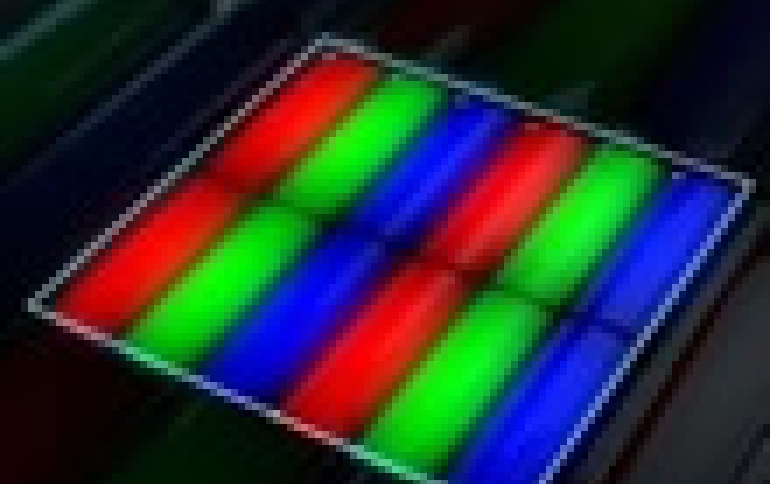
Apple's Retina Displays May Be Improved With Quantum Dots
Apple may enhance the color accuracy of its Retina displays by implementing an emerging LCD technology called Quantum Dots, that Amazon has already tapped for the Kindle Fire HDX 7.
Patently Apple has spotted four new patents that have been published on the US Patent and Trademark Office (USPTO) web site. Apple has applied for the patents, which describe quantum dots and how they work. In short,
quantum dots are small nanocrystals that can display quantum mechanical properties, efficiently convey color and improve accuracy. Apple says that a Retina Display without quantum dots will be able to match color vibrancy and accuracy on blue, but falls short on green and red. Quantum dots, however, follow the RGB wavelength, potentially creating improved color accuracy.
Quantum dots are tiny crystals so small that you can't see them with a typical microscope. Their size gives them the ability: to convert light into nearly any color in the visible spectrum with very high efficiency.
Each quantum dot is actually a tiny semiconductor, meaning it can convert incoming energy. The electronic characteristics of quantum dots are determined by their size and shape. This means that the the color of light given off by a quantum dot can be controlled just by changing its size. Bigger dots emit longer wavelengths like red, while smaller dots emit shorter wavelengths like green. The tune of a quantum dot - the wavelength of the light it emits ? behaves in a similar way.
Quantum dots' ability to precisely convert and tune a spectrum of light makes them ideal for LCD displays. All the colors we see can be made even better by remixing white light into red, green and blue components. Until now, the white light that LCDs have had to work with wasn't very good, it contained a lot of blue and yellow but not very much red or green.
Although it's not clear whether any of these technologies will make their way to Apple products, the company seem to have lost the lead in displays, as Amazon, Google, LG, and Samsung are launching products with the better screens.
Quantum Dots technology from a company called Nanosys have already been used in some models of Sony Bravia TVs and in the Amazon Kindle Fire HDX 7.
Quantum Dot displays produce highly saturated primary colors that are similar to those produced by OLED displays. But still, Apple is also rumored to use OLED displays for its iWatch wearable device.
Quantum dots are tiny crystals so small that you can't see them with a typical microscope. Their size gives them the ability: to convert light into nearly any color in the visible spectrum with very high efficiency.
Each quantum dot is actually a tiny semiconductor, meaning it can convert incoming energy. The electronic characteristics of quantum dots are determined by their size and shape. This means that the the color of light given off by a quantum dot can be controlled just by changing its size. Bigger dots emit longer wavelengths like red, while smaller dots emit shorter wavelengths like green. The tune of a quantum dot - the wavelength of the light it emits ? behaves in a similar way.
Quantum dots' ability to precisely convert and tune a spectrum of light makes them ideal for LCD displays. All the colors we see can be made even better by remixing white light into red, green and blue components. Until now, the white light that LCDs have had to work with wasn't very good, it contained a lot of blue and yellow but not very much red or green.
Although it's not clear whether any of these technologies will make their way to Apple products, the company seem to have lost the lead in displays, as Amazon, Google, LG, and Samsung are launching products with the better screens.
Quantum Dots technology from a company called Nanosys have already been used in some models of Sony Bravia TVs and in the Amazon Kindle Fire HDX 7.
Quantum Dot displays produce highly saturated primary colors that are similar to those produced by OLED displays. But still, Apple is also rumored to use OLED displays for its iWatch wearable device.





















